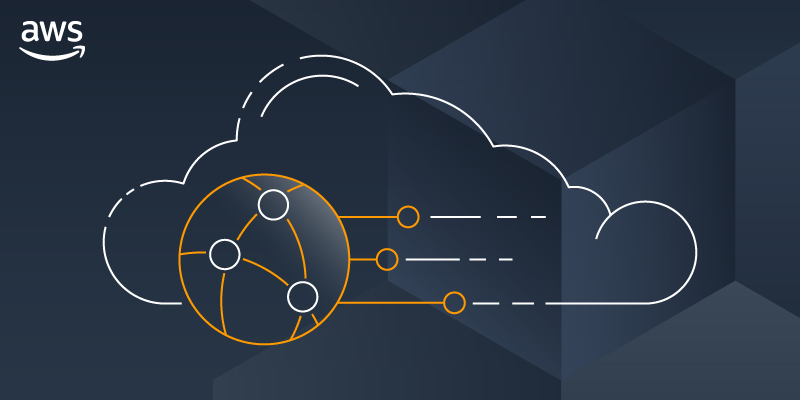Introducing Amazon CloudFront Virtual Private Cloud Origins
Amazon Web Services (AWS) has recently launched an exciting new feature for its CloudFront service: Virtual Private Cloud (VPC) origins. This development opens up new possibilities for securely delivering content from applications hosted within private subnets of the Amazon Virtual Private Cloud (Amazon VPC). By utilizing this feature, businesses can focus more on growth without compromising on security, while also enjoying the high performance and global scalability that CloudFront offers.
Overview of CloudFront and Amazon VPC
Amazon CloudFront is a content delivery network (CDN) that speeds up the delivery of web content to users by caching it at various global locations. This ensures that users experience faster load times and reduced latency, regardless of their geographical location. Meanwhile, Amazon VPC provides a logically isolated network within the AWS Cloud, enabling users to launch AWS resources into a virtual network that they define. This setup enhances security and allows for greater control over the network environment.
Enhancing Security with CloudFront VPC Origins
The introduction of CloudFront VPC origins simplifies the process of delivering content securely from private subnets. Previously, customers using services like Amazon Simple Storage Service (Amazon S3), AWS Elemental Services, and AWS Lambda Function URLs could secure their origins with Origin Access Control. This ensured that CloudFront acted as the primary access point for their applications. However, for applications hosted on Amazon Elastic Compute Cloud (Amazon EC2) or those using load balancers, achieving the same level of security required a more complex setup. Users had to combine various methods, such as access control lists (ACLs), firewall rules, and header validations, to ensure that CloudFront was the exclusive entry point.
Now, with the CloudFront VPC origins feature, AWS offers a managed solution that simplifies this process. It allows CloudFront distributions to point directly to Application Load Balancers (ALBs), Network Load Balancers (NLBs), or EC2 instances within private subnets. This setup ensures that CloudFront becomes the sole access point with minimal configuration, enhancing performance and reducing costs by eliminating the need for public IP addresses.
Configuring CloudFront VPC Origins
The CloudFront VPC origins feature is available at no additional cost, making it an accessible option for all AWS customers. Users can integrate it with new or existing CloudFront distributions through the Amazon CloudFront console or the AWS Command Line Interface (AWS CLI).
Let’s consider an example: Imagine you have an application hosted on AWS Fargate for Amazon ECS, and it’s fronted by an ALB. You can create a CloudFront distribution that uses this ALB directly within a private subnet. Here’s how you can set it up:
- Navigate to the CloudFront console and select the new menu option: VPC origins.
- Creating a new VPC origin is straightforward. You select the desired resources hosted in private subnets from the Origin ARN list or enter it manually. Choose a friendly name for your VPC origin and configure the security options.
- After confirming your selections, the VPC origin resource will be deployed. Note that, initially, the VPC origin resource must be in the same AWS Account as the CloudFront distribution, although support for cross-account resources is planned for future releases.
Once the VPC origin is created, you can add it to your CloudFront distribution by selecting the ARN from the dropdown menu or copying and pasting it manually. This setup allows your CloudFront distribution to serve content directly from resources hosted in private subnets with just a few clicks.
Maintaining Application Security
While CloudFront VPC origins significantly simplify content delivery from private subnets, it’s essential to continue implementing robust security measures. For instance, using AWS Web Application Firewall (WAF) can help protect against web exploits, while AWS Shield offers managed Distributed Denial of Service (DDoS) protection. These services, along with others, ensure comprehensive protection for your applications.
Conclusion
The addition of CloudFront VPC Origins represents a significant advancement for organizations seeking to deliver secure, high-performance applications. By enabling CloudFront distributions to serve content directly from private subnets, AWS reduces the complexity and cost associated with maintaining public-facing origins. This new feature ensures that applications remain secure while benefiting from CloudFront’s global reach and performance enhancements.
For more detailed information on how to get started with CloudFront VPC Origins, you can refer to the official AWS documentation.
Incorporating VPC origins into your CloudFront distributions can streamline your content delivery strategy, enhance security, and optimize performance—all of which are crucial for businesses in today’s digital landscape. As AWS continues to innovate and expand its offerings, businesses can leverage these advancements to stay competitive and secure in an ever-evolving technological environment.
For more Information, Refer to this article.


































